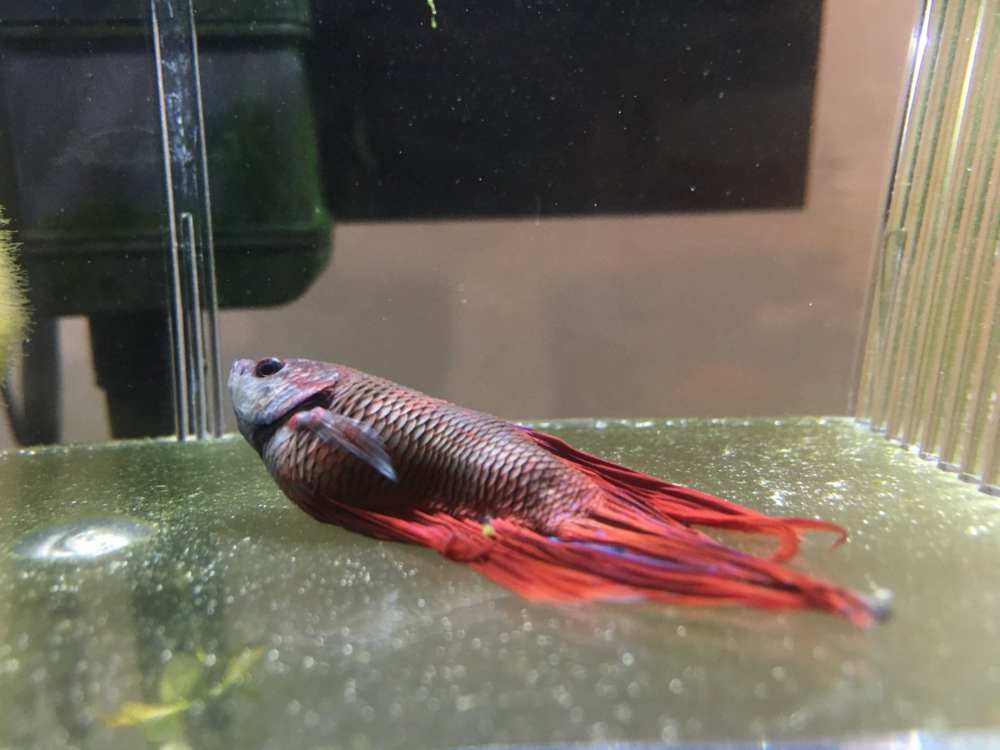UNAIR NEWS – Betta fish is one of the most popular fishery commodities among various communities and countries because betta fish has a high economic value and can provide many benefits. However, in the process of cultivating betta fish, failures often occur. One of the causes is a disease factor that often threatens betta fish.
Therefore, the Aquaculture Students’ Association (HIMAKUA) PSDKU Universitas Airlangga in Banyuwangi held a Fisheries Study entitled “All about Betta Fish: Production, Marketing, and Diseases” on Friday, June 18, 2021. As a speaker of the event, Darmawan Setia Budi S.Pi., MP., a lecturer of Faculty of Fisheries and Marine Sciences (FPK) UNAIR Banyuwangi, explained several diseases attacking betta fish.
Darmawan Setia Budi explained several diseases in betta fish, including fin rot, white spot or ich (also known as ick), pop-eye, and dropsy.
“To find out which fish are sick, we need to do sterilization first by using methylene blue or acriflavine. If one of the betta fish is sick, it must be separated from the healthy fish immediately,” he explained.
Fin rot, continued Darmawan, is caused by bacteria. The symptoms include a dark or sometimes reddish color, like bleeding on the edges of the fins. The affected fins gradually wear out like falling out/torn. Even though the fish are still actively moving with a good appetite, the fins may be clamped, and the color is pale.
“When the rot is severe, it will spread to the body of the fish,” he said.
In addition, a white spot or ich is caused by a parasite of the Protozoa (Ichthyophthirius multifiliis). The symptoms, he said, are white spots appearing on the body of the fish, causing the fish to move less actively, have less appetite, and have pale fins.
“Fish often move fast and hit the wall of the aquarium, like trying to scratch their body,” he said.
Meanwhile, pop-eye or swollen fish’s eyes are caused by bacteria. The symptom shows that the fish’s eyes start to swell. It starts from one eye in the early stages but then attacks both of the fish’s eyes. The fish move less actively, and their appetite decreases. Sometimes they do not want to eat at all. In addition, the fish has a pale color. Dropsy, he continued, has symptoms such as swelling in the stomach and inability to excrete feces. The early stages are similar to constipation. The fish become inactive, and their appetite decreases. They do not feel like eating at all. In addition, the fins are clamped, and the color is pale.
“If it gets worse, the stomach will swell and becomes reddish. The scales start to wear off from the stomach to the whole body so that the fish will look like pineapples,” explained the owner of @bettaisun.
At the end, Darmawan advised, in controlling betta fish diseases, it is necessary to quarantine sick fish and always maintain the quality of water by periodically changing the water for the betta fish.
“And the provision of methylene blue, acriflavine, and fish salt in aquaculture under sunlight can be done to control betta fish diseases,” he concluded.
Author: Ananda Wildhan Wahyu Pratama
Editor: Nuri Hermawan (YA/AP)





